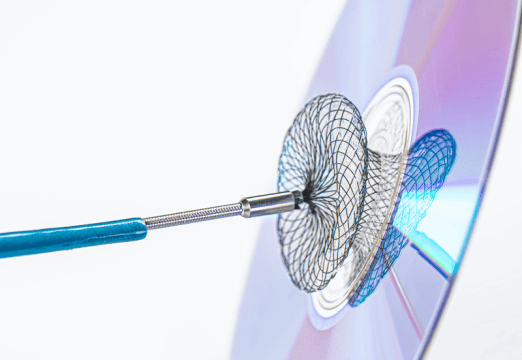The transcatheter treatment of patent foramen ovale (PFO) has been shown to reduce thromboembolic events in patients with cryptogenic stroke. However, most of large randomized studies have failed to include patients with thrombophilia, either inherited or acquired. For instance, the RESPECT study excluded patients with antiphospholipid antibodies (AFA) or hyperhomocysteinemia, while the REDUCE screened for AFA and only excluded patients with anticoagulation indication.

It is important to highlight that thrombophilia is common among patients with cryptogenic stroke. In the absence of other prolonged anticoagulation indication, PFO closure might result beneficial to reduce the risk of stroke or paradoxical thromboembolism in these patients. Nevertheless, we should still bear in mind these patients with thrombophilia also present a higher risk of procedure related complications and higher risk of thromboembolic events, both arterial and venous. In fact, the presence of thrombophilia alone has been associated with higher incidence of stroke or transient ischemic attack after PFO closure.
The aim of this study was to assess the differences between events in patients undergoing transcatheter PFO closure driven by cryptogenic shock, paradoxical thromboembolism or deep vein thrombosis (DVP) / lung thromboembolism (LTE) at Toronto General Hospital between 1999 and 2017. Outcomes were assessed at 30 days, including hospitalization for observation and hospitalizations, as well as long term outcomes, which included TIA, stroke, acute MI, major bleeding, DVP / LTE, new septal procedure and death.
Read also: TAVR in Asymptomatic or Minimally Symptomatic Patients: 30-Day Results.
Data from 660 patients undergoing PFO closure were gathered; patient mean age was 56.4, and 63% were treated with Amplatzer. 97.9% of patients received PFO closure driven by cryptogenic shock, while in the rest it was driven by DVT/LTE. Thrombophilia was diagnosed in 26% of cohort patients and most cases presented acquired mutations. In general, there were no significant baseline differences between the group, except for the presence of migraines, which was higher in thrombophilia patients. (26% vs. 34%; P=0.04).
Most patients had a short stay and were discharged the same day of the procedure (91.2%). Complications were registered in 2.9% of cases, including vascular lesions (fewer than 5), arrhythmias requiring treatment (15 or more) and device embolization (fewer than 5).
Looking at long term events, we observed that 19.5% of cases had at least one visit to the observation unit. During treatment, dual antiplatelet treatment (DAPT) was prescribed to 61% of patients with thrombophilia and 68.8% of patients without thrombophilia. Mean cohort followup was 11.6 years and the most common events were atrial fibrillation (1.0 every 100 persons/year; CI 95% 0.8-1.2), followed by new ACV/AIT (0.8 every 100 persons/year; CI 95%: 0.6-1.1).
There were no significant differences in the studied adverse events between patients with and without thrombophilia. (Log-Rank test P = 0.4924).
Conclusions
This observational study including one quarter of patients with thrombophilia did not find significant differences in cerebrovascular event recurrence between patients with and without thrombophilia at long term.
These studies support the indication and potential use of POF closure in patients with thrombophilia, despite their prior exclusion from large randomized studies.

Dr. Omar Tupayachi.
Member of the Editorial Board of SOLACI.org.
Original Title: Short- and Long-Term Outcomes in Patients With Thrombophilia Undergoing Transcatheter Closure of Patent Foramen Ovale.
Reference: Abrahamyan, Lusine et al. “Short- and Long-Term Outcomes in Patients With Thrombophilia Undergoing Transcatheter Closure of Patent Foramen Ovale.” JACC. Cardiovascular interventions vol. 16,11 (2023): 1360-1366. doi:10.1016/j.jcin.2023.04.027.
Subscribe to our weekly newsletter
Get the latest scientific articles on interventional cardiology





